What does it mean to have the right-of-way?
Whenever someone says “right-of-way” they are usually talking about some type of understanding that drivers have with regard to which road user is going to go first before another in a driving situation. In other words, who must yield to who whenever two or more road users would like to enter the same space at the same time.
Someone needs to go first. Otherwise, two or more road users entering the same space at the same time is equal to a collision. For a related article, check out Right-of-way in the parking lot.
No one really “has” the right-of-way – an attitude shift
Nobody really “has the right-of-way.” The driving school where I learned how to become a driving instructor would have absolutely, positively fired me if I ever started teaching drivers that they simply “had the right of way.”
This is not just some geeky language technicality, but an important attitude shift, purposefully in place to prevent crashes.
Rather than thinking someone “has the right of way,” it’s more accurate – when you think about it – that certain road users should yield to others; they’re merely supposed to. It doesn’t mean they’re actually going to yield. Driving is dangerous, and we utilize this kind of attitude to greatly reduce risk.
Admittedly, someone has to give the right-of-way, and someone else has to take it. Otherwise, no one would get where they were going, and on every corner would be a Mexican standoff, forever. The trick to safe driving is to know when to give, but also when to take the right-of-way with confidence.
Right-of-way is “that space at that time”
Technically speaking, right-of-way is literally equal to “that space at that time.” If one driver yields to another, then the other has been given the right to safely use that particular space on the road at that particular moment in time.
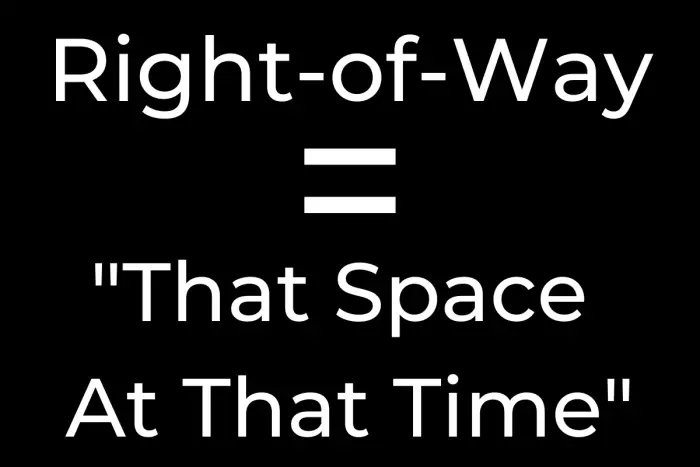
Yield to whoever was there first
One good thing to realize about driving right-of-way is that no matter what kind of traffic control device there is – or isn’t – at any particular location, and no matter what is “supposed to happen,” drivers must legally yield to any other road user that has entered any space before they did. If he/she/it/they got there before you, yield.
Right of Way in the Motor Vehicle Act
The British Columbia Motor Vehicle Act, contains many references to the phrase “right-of-way,” but the majority of them are related to intersections that are controlled by traffic lights. They basically specify who goes first in various situations. Generally speaking, pedestrians are given priority over all other vehicles. This is true as long as the pedestrian is following the pedestrian rules properly.
Right-of-way at 2-way stop intersections
When you’re driving on a through street, coming up to a typical two way stop sign, neither you or the driver facing you has a stop sign. Both vehicles must yield to pedestrians and cyclists first and foremost.
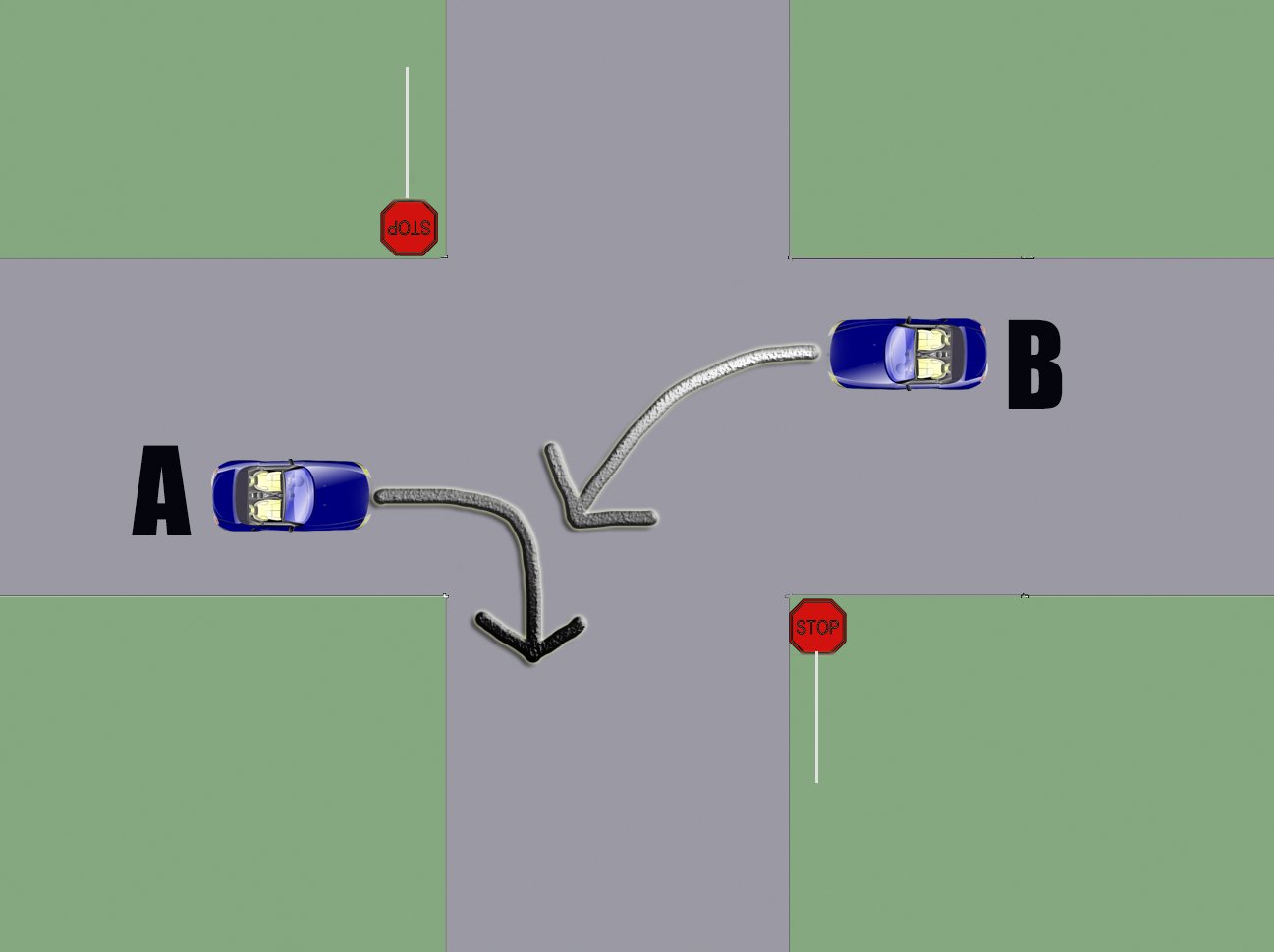
2 Way Stop Rules
Who has the right of way at a 2 way stop in Canada?
- Drivers facing a 2-way stop sign must stop their vehicle completely and first yield to any pedestrians and traffic on the through street, and may only proceed when safe
- If two vehicles arrive at the same time, drivers must yield the right-of-way to whichever vehicle completely stopped and then entered the intersection first
- If two vehicles stop at the same time, drivers turning left should yield to drivers planning to continue straight through
Right-of-way: Traffic light turns
For the typical traffic light, let’s say it’s a green traffic light.
- Right-turning and left-turning drivers must yield to pedestrians
- Left-turning drivers must yield to right-turning drivers

4-Way Stops Right-of-way
- Whoever stopped first, should go first (if safe)
- If you stopped second, go second
- If you stop at the same time, yield to the right
- If you stop at the same time, the left turn yields to the right turn, and the left turn yields to straight through
- Check out my full guide to 4-way stops
Vehicles exiting lane/driveway/parking lot
Any vehicle exiting a lane, driveway, or parking lot are legally required to stop completely and yield to pedestrians and all other road users before proceeding, just the same as a stop sign. To learn more, check out our blog Emerging from a Lane, Driveway, or Parking Lot.
What is a through street?
According to the Act, “through highway” means a highway or part of a highway at the entrances to which stop signs are erected under this Act;
Generally, when people say through street it means a street along which the traffic “has the right-of-way” over vehicles entering or crossing at intersections.
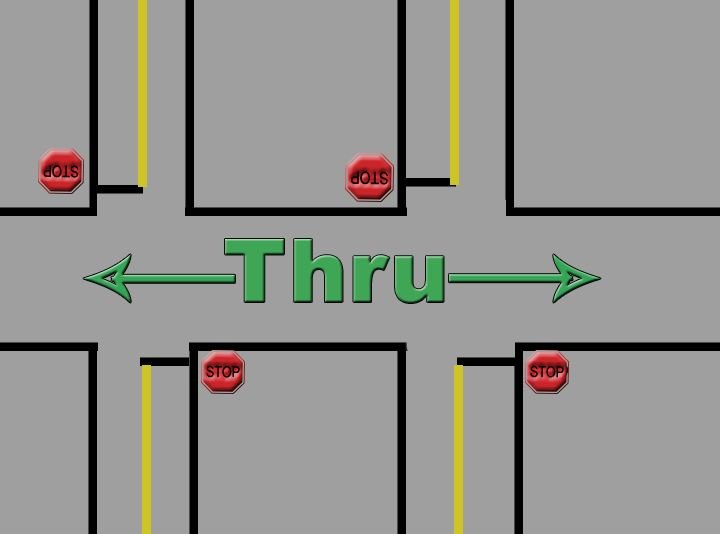
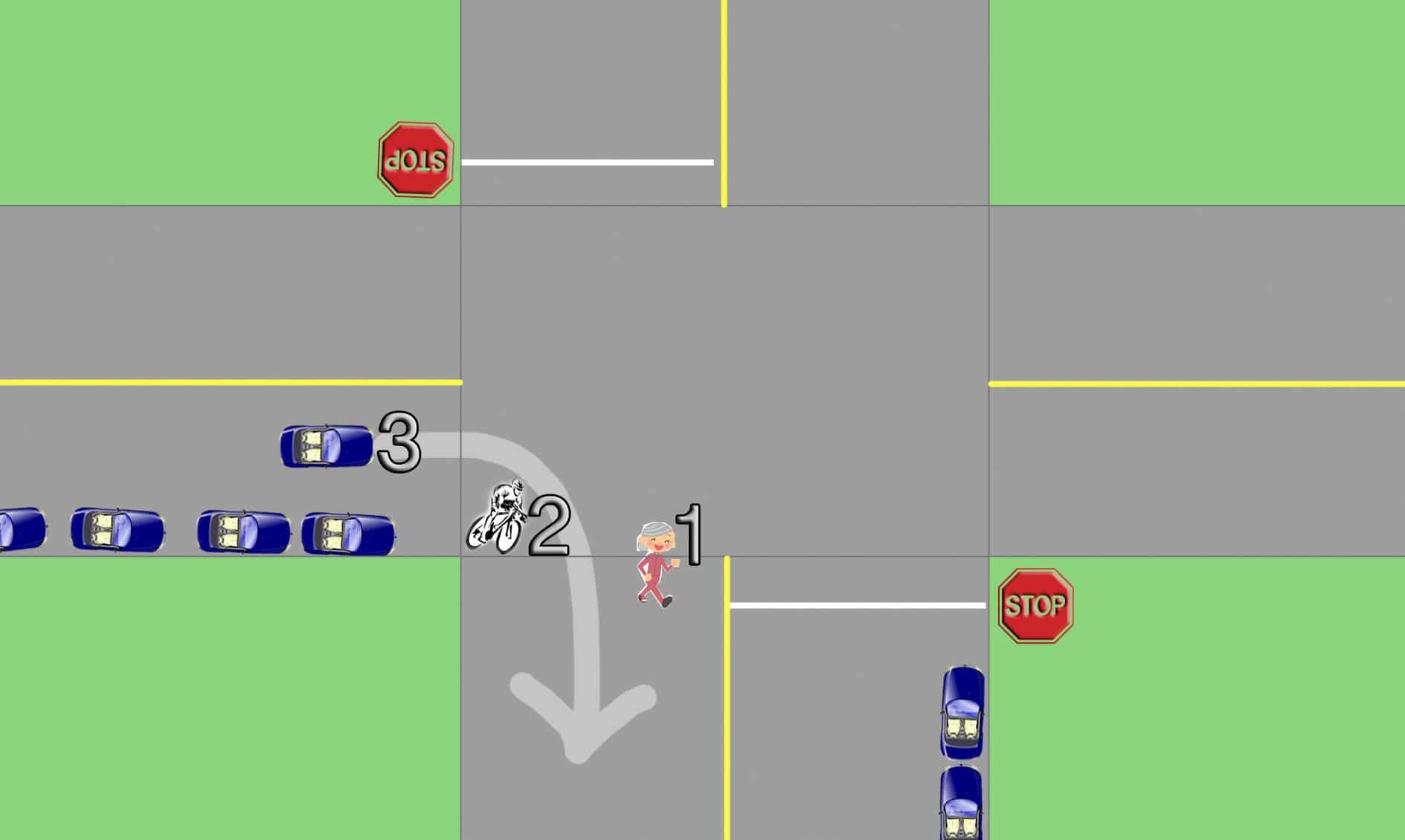
Why do we yield to the right and not the left?
If we yield to the right, it clears the intersection faster than if we yield to the left.
In many circumstances, you do not need to wait until the other car is gone into the far distance, disappearing over the horizon, and the dust settling on the ground before you start to roll; you should start rolling when the other vehicle is pretty much out of your way.
This is all based on the idea that the point of driving is to get somewhere, and clearing intersections in the most efficient manner possible would benefit everyone.
If Car A goes first (the car on the “Right”), then Car B can start rolling when Car A is about halfway through the intersection:
If Car B went first (the car on the “Left”), then Car A would have to wait until Car B got across the entire intersection, remaining fully stopped, and then could proceed. This would take longer (especially when the roads are very wide).



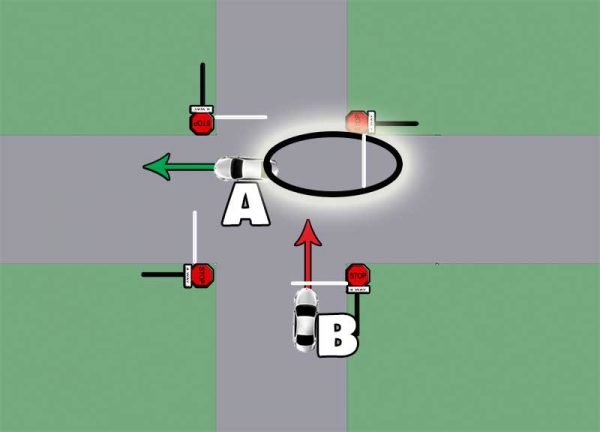
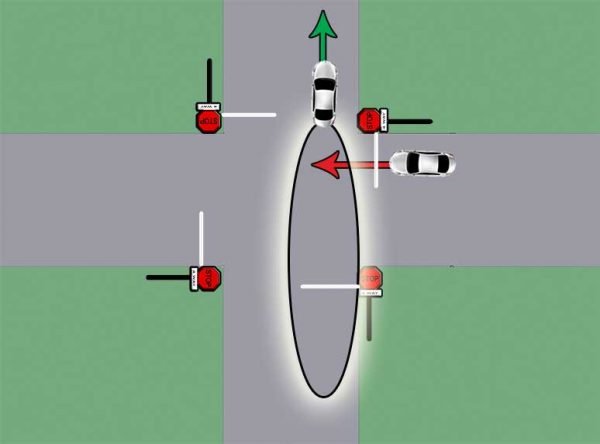


I have a questions, maybe doesn’t directly relate to the situation of left and right turns.
This happened during my road test,
At a four way stop, Me and another car arrived at the intersection at the same time.
He is on my left wanting to go straight and I am at his right but am making a left turn.
Who should yield in this case?
I would say you should go first because you’re on the right (doesn’t really matter which way you are going in this case, we yield to the right if we stop at the same time.)
Great thank you!
If you were facing each other, and one wants to go straight and one wants to go left, then the one going left should yield. Maybe that’s what you were thinking. :)
He is not facing me but on my left going straight.
I guess you pretty much answered it.
He should yield cuz i am at his right, tho im turning left.
Yep!
Succinct and comprehensive! Been searching the web everywhere for info on right-of-way for left and right turns, and no other article gets straight to the point as well as this one. Thanks!
Anytime ;)
I’ve learned that the car turning right has the right of way, as described in the article. However, a lot of people don’t seem to know that these days. I constantly have to make a left out of my street, and often times, there is a car on the other side trying to make a right turn. I drive about half way out so that I can complete my left turn as soon as the car makes the right turn. The car turning right just sits there, so I end up making the left turn first so that I’m not sitting in the middle of the road. (If I don’t drive half way out, I’ll be waiting there for hours.) This drives me crazy!
Oh they probably get scared because you’ve pulled into the intersection already, that is fine as long as both cars seem to have an understanding or communication of who is going first. Cars taking right of way when it isn’t theirs is just rude, or worse those ‘almost accidents’ that happen because drivers aren’t educated or are not polite. I hear ya there though, it is often a case of what is supposed to happen & what actually happens to keep you safe are worlds apart. I prefer 4 way stops, but I guess if you live around there you don’t have a choice unless you want to turn right and go around the block, lol which is probably more obnoxious.
At traffic lights, those people turning right, that have the right of way, should also be vigilant to a driver turning left who is facing an amber light. That driver needs to clear the intersection, so in a sense, that driver turning left needs the right of way. I don’t know how many times, I have almost been in an accident because I HAVE to turn left to clear the intersection, but the driver turning right won’t get out of the way. It is a sticky point, but sometimes the rules do not always dictate the exact rule.
I hear ya. What is supposed to happen by law, likely won’t happen a lot of the time in real life, but it’s important to understand the rules; especially for new drivers. and also to understand that you must expect to make allowances for the questionable, unpredictable or dangerous actions of other drivers if you would like to stay alive and in one piece. and furthermore, to just accept things and expect things. if you are never surprised by a car when driving then you will have a lot less of a reason to become stressed or anxious or ?
This is such a big pet peeve of mine, I shouldn’t let it bother me as much as it does though. I wish people would understand the basics again of who has the right of way. Yeah you are right that car b should yield to car a, but it not always going to happen.
It seems like it should be such a simple concept…